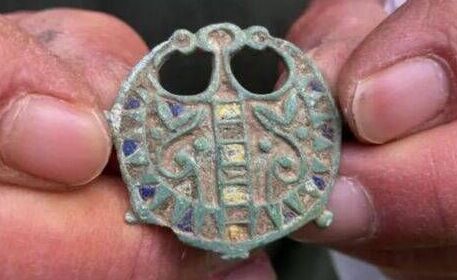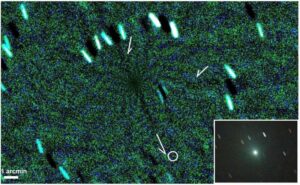
A metal detecting enthusiast in Dorset has uncovered a remarkable **2,000-year-old brooch**, initially mistaking it for a children’s toy. **Martin Turner**, who resides in **Puddletown**, discovered the artifact while exploring local fields. After cleaning the brooch, he noticed signs of “bronze disease,” indicating its significant age and historical value.
Turner presented the brooch to his local finds liaison officer, who confirmed its authenticity and is preparing to formally record the discovery. If the brooch goes unclaimed, it will be returned to Turner, who has expressed interest in potentially donating it to a nearby museum. This extraordinary find comes in the wake of other notable discoveries featured on the **Antiques Roadshow**, such as a guest learning her heirloom wedding necklace is valued at over **$10,000**.
Historical Significance of the Brooch
Dating from approximately the **1st century BC to the 1st century AD**, the brooch belongs to the late Iron Age, a period just before and during the early Roman era in Britain. This era is marked by the Roman Empire’s initial incursions into Britain, making the artifact not just a personal treasure but a piece of the broader historical narrative.
Turner, along with his son, took up metal detecting as a hobby three years ago after moving to the area. Since then, they have discovered hundreds of items using a secondhand metal detector he purchased for around **£600**. Turner noted, “Every field I go in I find stuff. I must have 13 Chinese tubs full of antiquities.”
Among their most impressive finds are **14 Bronze Age heads**, which Turner described as “unreal.” He has donated these significant artifacts to the **British Museum** in London. Reflecting on his experiences, Turner shared, “People spend all their lives trying to get one of these on their bucket list and I’ve been part of finding 14 of them. The feeling of holding them for the first time in **4,500 years**—you’re the only person to hold these in that amount of time. That’s the excitement of it.”
Legal Framework for Treasure Discoveries
Under the **Treasure Act 1996**, items discovered in England, Wales, and Northern Ireland are classified as treasure if they are at least **300 years old**. Certain conditions apply, such as the requirement that non-coin items must consist of at least **10% precious metal** by weight, including gold or silver. Notably, amendments made in **2023** have extended the definition of treasure to include artifacts over **200 years old** that are considered to possess exceptional historical, archaeological, or cultural importance.
When a discovery is officially designated as treasure and subsequently purchased by a museum, the finder receives a monetary reward as compensation. This framework not only encourages individuals like Turner to engage in metal detecting but also ensures that significant historical artifacts are preserved for future generations.







